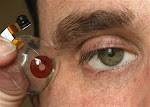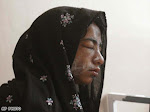 When Ruth Burns had surgery to relieve a pinched nerve in her back, the operation was supposed to be an "in-and-out thing,"recalled her daughter,Kacia Warren. But Burns developed pneumonia and was put on a ventilator.Five days later, she was discharged-only to be rushed by her daughter to the hospital hours later, disoriented and in alarming pain.Seventeen days after the surgery, the 67-year-old nurse was dead.Burns had developed meningitis-an infection of the fluid that surrounds the spinal cord and brain.The culprit was Acinetobacter baumannii, a bug that preys on the weak in hospitals.Worse,it was a multi-drug-resistant strain.Acinetobacter doesn't garner as many headlines as methicillin-resistant Staphylococcus aureus, the dangerous superbug better known as MRSA.But a January report by the Infectious Diseases Society of America warned that drug-resistant strains of Acinetobacter baumannii and two other microbes-Pseudomonas aeruginosa and Klebsiella pneumoniae-could soon produce a toll to rival MRSA's.The three bugs belong to a large category of bacteria called "gram-negative" that are especially hard to fight because they are wrapped in a double membrane and harbor enzymes that chew up many antibiotics. As dangerous as MRSA is, some antibiotics can still treat it, and more are in development, experts say. But the drugs once used to treat gram-negative bacteria are becoming ineffective, and finding effective new ones is especially challenging. "We're literally running out of drugs to treat gram-negatives," said Dr. Brad Spellberg,(picture left)an infectious disease specialist at Harbor-UCLA Medical Center. "And there is nothing in the pipeline right now."Exact numbers are hard to come by, because infections by these three bacteria are not reportable by law. But using 2002 data voluntarily reported to the Centers for Disease Control and Prevention from about 300 large, mostly urban hospitals, the Infectious Diseases Society of America identified about 104,000 gram-negative infections that were resistant to at least some antibiotics, roughly the same as the 102,000 MRSA infections found that year. A class of broad-spectrum antibiotics known as carbapenems have been the drug of last resort for gram-negative bugs."The carbapenems are...the best gram-negative drugs we have," said Dr. Helen Boucher of Tufts University, an infectious disease specialist. "These bugs have found a way to make an enzyme that dissolves these drugs. That means our best gun is ineffective."As the drugs fail, doctors find themselves as a last resort turning to older, more toxic ones such as colistin, largely abandoned because of the severe side effects: kidney damage and deafness....
When Ruth Burns had surgery to relieve a pinched nerve in her back, the operation was supposed to be an "in-and-out thing,"recalled her daughter,Kacia Warren. But Burns developed pneumonia and was put on a ventilator.Five days later, she was discharged-only to be rushed by her daughter to the hospital hours later, disoriented and in alarming pain.Seventeen days after the surgery, the 67-year-old nurse was dead.Burns had developed meningitis-an infection of the fluid that surrounds the spinal cord and brain.The culprit was Acinetobacter baumannii, a bug that preys on the weak in hospitals.Worse,it was a multi-drug-resistant strain.Acinetobacter doesn't garner as many headlines as methicillin-resistant Staphylococcus aureus, the dangerous superbug better known as MRSA.But a January report by the Infectious Diseases Society of America warned that drug-resistant strains of Acinetobacter baumannii and two other microbes-Pseudomonas aeruginosa and Klebsiella pneumoniae-could soon produce a toll to rival MRSA's.The three bugs belong to a large category of bacteria called "gram-negative" that are especially hard to fight because they are wrapped in a double membrane and harbor enzymes that chew up many antibiotics. As dangerous as MRSA is, some antibiotics can still treat it, and more are in development, experts say. But the drugs once used to treat gram-negative bacteria are becoming ineffective, and finding effective new ones is especially challenging. "We're literally running out of drugs to treat gram-negatives," said Dr. Brad Spellberg,(picture left)an infectious disease specialist at Harbor-UCLA Medical Center. "And there is nothing in the pipeline right now."Exact numbers are hard to come by, because infections by these three bacteria are not reportable by law. But using 2002 data voluntarily reported to the Centers for Disease Control and Prevention from about 300 large, mostly urban hospitals, the Infectious Diseases Society of America identified about 104,000 gram-negative infections that were resistant to at least some antibiotics, roughly the same as the 102,000 MRSA infections found that year. A class of broad-spectrum antibiotics known as carbapenems have been the drug of last resort for gram-negative bugs."The carbapenems are...the best gram-negative drugs we have," said Dr. Helen Boucher of Tufts University, an infectious disease specialist. "These bugs have found a way to make an enzyme that dissolves these drugs. That means our best gun is ineffective."As the drugs fail, doctors find themselves as a last resort turning to older, more toxic ones such as colistin, largely abandoned because of the severe side effects: kidney damage and deafness....By Mary Engel
To read more go to:
As in the days of Noah...






















































































.bmp)

























.bmp)